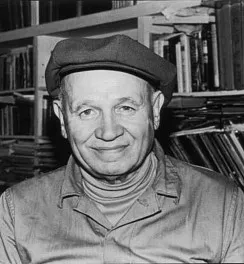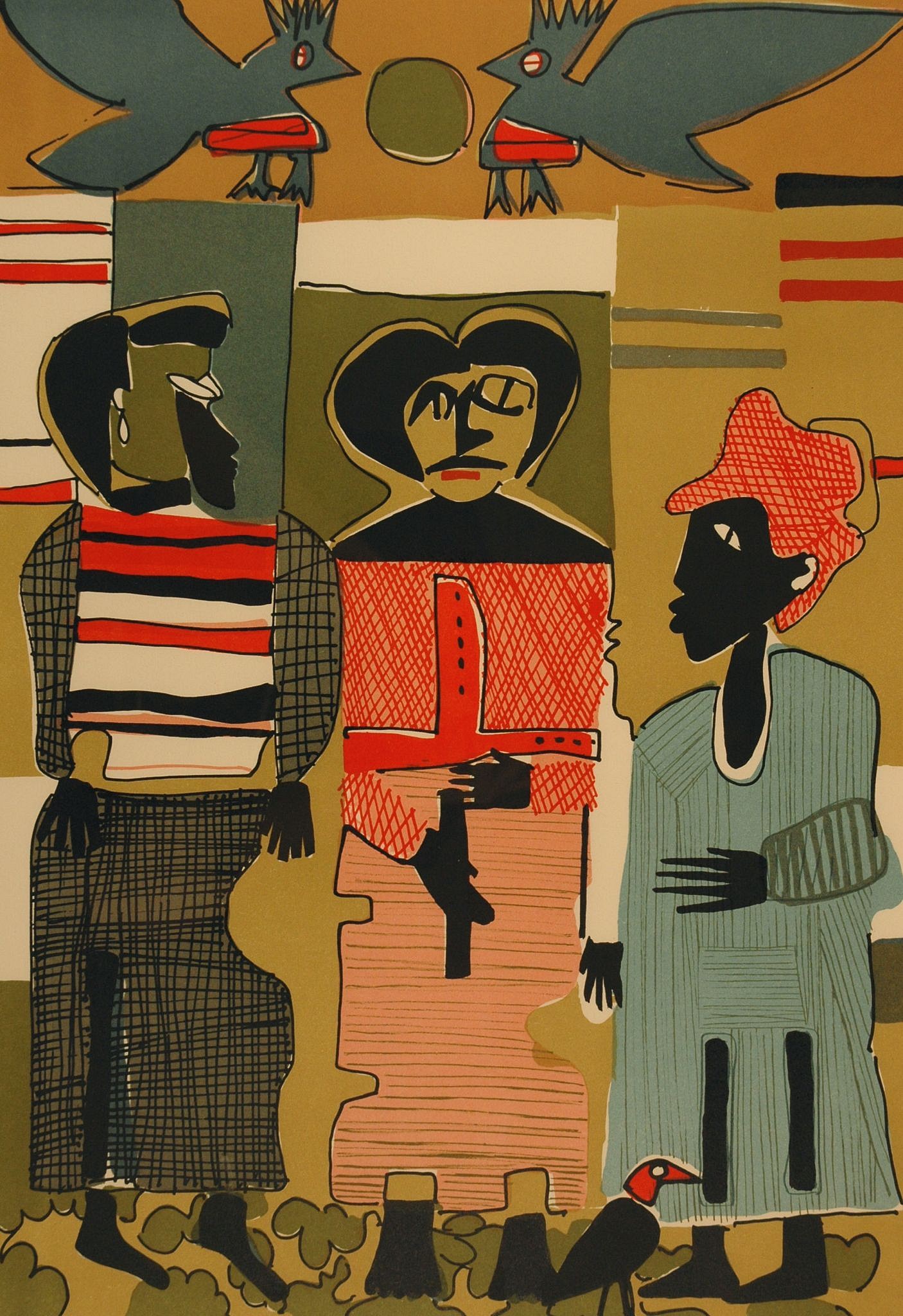
Romare Bearden
Romare Bearden's artistic genius and originality firmly established him as one of the most innovative visual artists of the twentieth century.
Biography of Romare Bearden
Romare Bearden was born in 1911 in Charlotte, North Carolina. However, he spent most of his formative years in New York City and Pittsburgh, Pennsylvania.
In 1929, Romare Bearden completed his high school education at Peabody High School in Pittsburgh. He then pursued higher education at Lincoln University, where Bearden displayed his artistic talent by serving as the art director for Beanpot, Boston University's student humor magazine.
Later, Bearden shifted his focus toward art as he continued his studies at New York University (NYU). During this period, he became a prominent figure at NYU, taking on the roles of lead cartoonist and art editor for The Medley, the monthly journal of the secretive Eucleian Society at the university. In 1935, Bearden graduated from NYU, earning a degree in science and education.
In 1936 and 1937, Romare Bearden furthered his artistic education under the tutelage of German artist George Grosz at the Art Students League. To support himself during this period, Bearden worked as a political cartoonist for African-American newspapers, including the Baltimore Afro-American.
In 1940, his first solo exhibition was held in Harlem, where Bearden's work was met with acclaim and appreciation from the local community. Four years later, in 1944, Bearden achieved another significant feat with his first solo show in Washington, DC.
In the midst of World War II, Romare Bearden enlisted in the United States Army and served from 1942 to 1945, primarily stationed in various parts of Europe. Following his service in the army, Romare Bearden became associated with the Samuel Kootz Gallery, a renowned commercial gallery in New York City that showcased avant-garde art.
After a hiatus, Romare Bearden resumed exhibiting his artwork in 1960. The following year, in 1961, he established a significant partnership with the Cordier and Ekstrom Gallery in New York City. This gallery became his primary representative, providing a stable platform for showcasing his artistic creations throughout the rest of his illustrious career.
During the early 1960s in Harlem, Romare Bearden played a pivotal role as a founding member of the art group called "Spiral." In 1970, Romare Bearden played a pivotal role as one of the founding members of the Black Academy of Arts and Letters, a significant institution dedicated to promoting African-American artists and their contributions to the arts. Two years later, in 1972, he achieved another remarkable milestone when he was elected to the National Institute of Arts and Letters.
On March 12, 1988, Romare Bearden passed away due to complications from bone cancer.
Romare Bearden's artistic legacy is well-preserved in numerous esteemed public collections. His works grace the galleries of prominent institutions, such as the Metropolitan Museum of Art, the Whitney Museum of American Art, the Philadelphia Museum of Art, the Museum of Fine Arts in Boston, and The Studio Museum in Harlem, among others. Through these collections, his art continues to inspire and captivate audiences, solidifying his position as a celebrated and influential figure in American art history.
Romare Bearden's Art Style
During the early stages of his artistic career, Romare Bearden frequently depicted scenes from the American South in his paintings. His artistic style bore a significant influence from the Mexican muralists, particularly Diego Rivera and José Clemente Orozco.
Romare Bearden's collage work began around 1963 or 1964. Initially, he experimented by combining images from magazines and colored paper, and he would frequently modify them using sandpaper, bleach, graphite, or paint to achieve the desired effects. These collages were then enlarged through the photostat process, allowing Bearden to expand upon their visual impact.
As time passed, Bearden's collage techniques evolved, leading to the incorporation of blown-up photostat photographic images, silk-screens, colored paper, and even billboard fragments in his later works. With these varied materials, he created large-scale collages on canvas and fiberboard, infusing his compositions with a rich tapestry of textures and elements.
He used clippings from magazines, which in and of itself was a new medium, as glossy magazines were fairly new. He used these glossy scraps to incorporate modernity in his works, trying to show how African-American rights were moving forward, and so was his socially conscious art.
In his early works, Romare Bearden conveyed a strong message about the significance of African Americans' unity and collaboration. Through his art, he emphasized the power of coming together as a community, fostering a sense of solidarity and cooperation among his people. These themes would remain central to his artistic expression, showcasing Bearden's dedication to celebrating the shared experiences and collective strength of African Americans.

In addition to his accomplishments as a visual artist, Romare Bearden showcased his artistic versatility by designing costumes and sets for the renowned Alvin Ailey American Dance Theater. His artistic contributions extended further to include program designs, sets, and designs for Nanette Bearden's Contemporary Dance Theatre.
Years:
Born in 1911
Country:
United States of America, Charlotte, North Carolina